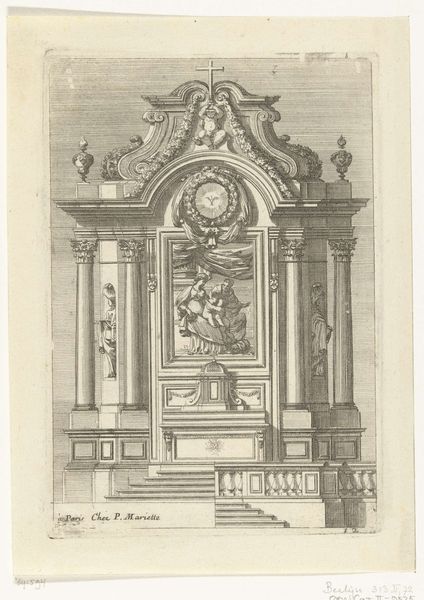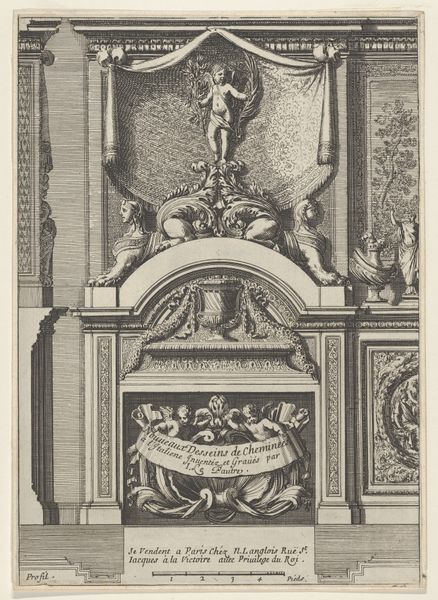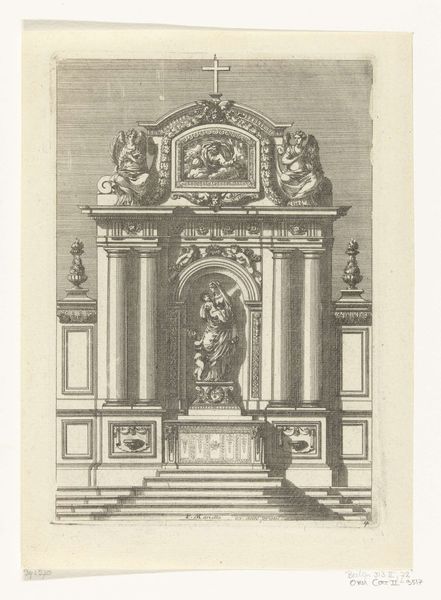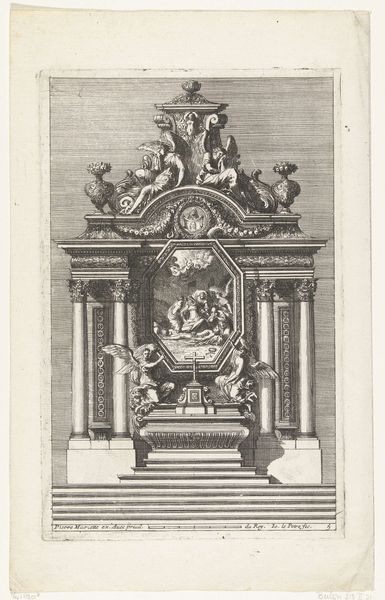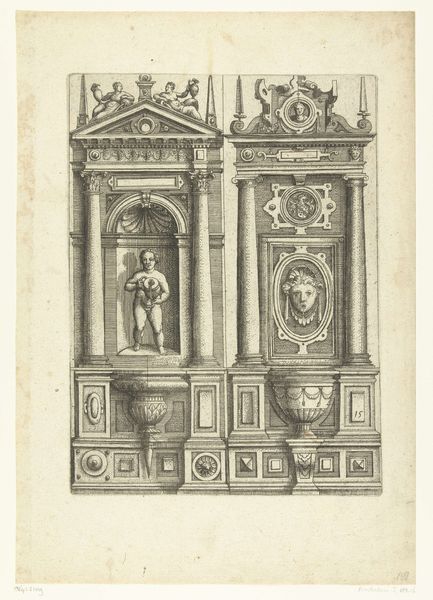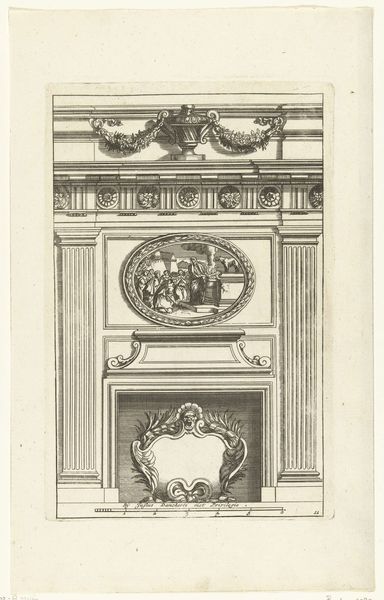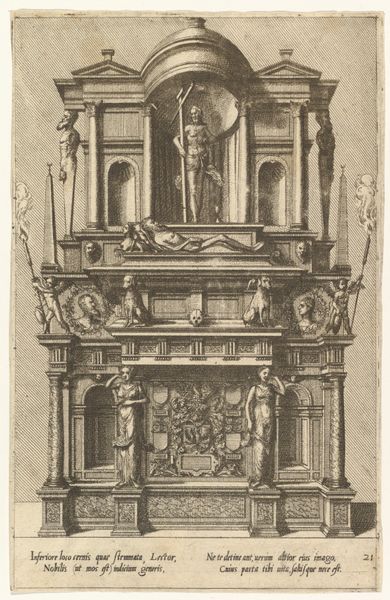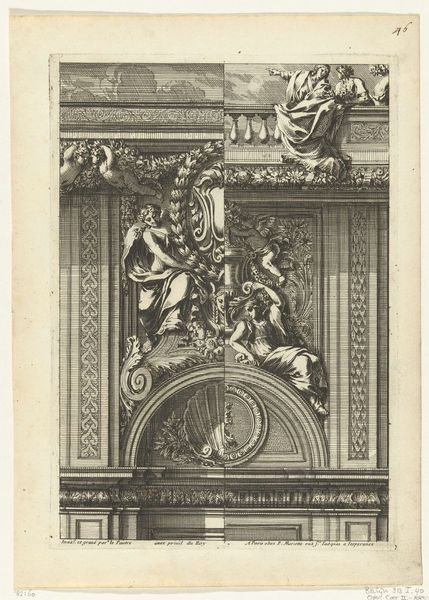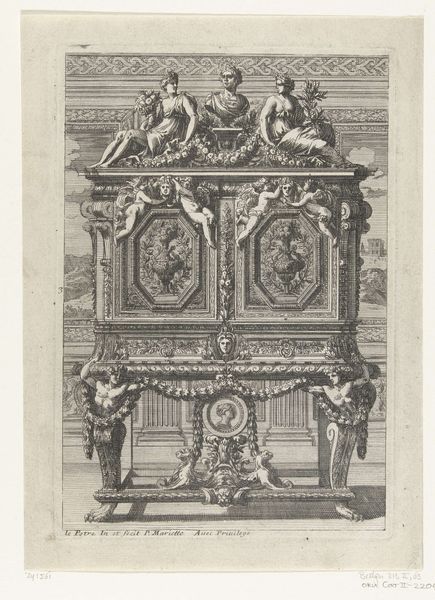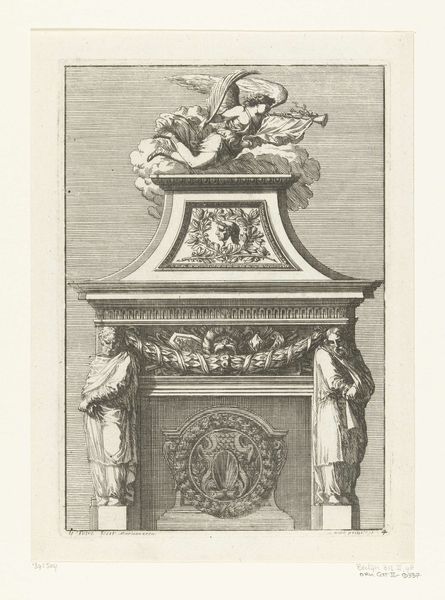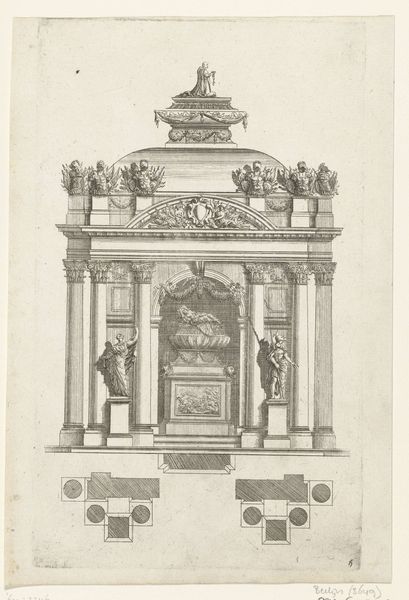
print, engraving
#
baroque
# print
#
old engraving style
#
figuration
#
line
#
history-painting
#
engraving
Dimensions: height 196 mm, width 137 mm
Copyright: Rijks Museum: Open Domain
Curator: Looking at this engraving, entitled "Tabernacle with Crucifixion and Mary Magdalene," dating to between 1666 and 1693, by Jean Lepautre, what’s your initial reaction? Editor: Somber, definitely somber. The stark contrast of the lines, typical of that period, emphasizes the emotional weight of the scene. There’s a definite theatrical quality to the architectural frame. Curator: Lepautre has carefully staged this devotional image. The composition, the tabernacle-like structure, directs the eye towards the central scene: the crucifixion, with Mary Magdalene at the foot of the cross. Think of this print circulating as a message—about power, faith, and image politics in Baroque France. Editor: Absolutely, the framing devices and figures on either side serve to elevate and contextualize the central event of the crucifixion. How would images like this one shape and guide individual devotional practices and public expression of piety? Curator: Precisely. The engraving served a vital purpose within religious and social spheres. Reproductions of artwork allowed the general public access to artistic movements like Baroque in personal lives. People engaged with copies, often altered, sometimes cherished. These images are embedded in cultural memory. Editor: The symbolic implications resonate beyond just personal reflection, reflecting prevailing ideals of French society. Did Lepautre consciously attempt to harness its ideological power? How much agency do engravers, like Lepautre, have in constructing cultural memory versus merely reproducing existing symbols of authority? Curator: Lepautre certainly played a role. By choosing this composition, style and making it reproducible he shapes not just aesthetics but religious and social messaging. The imagery evokes a cultural continuity and reinforces established narratives. Editor: This discussion made me realize that such prints were more than mere copies, but rather potent agents in Baroque religious propaganda and identity formation. Curator: Agreed. Analyzing prints like this Tabernacle makes me consider art as an evolving phenomenon of continuity. It also prompts reflections on psychology, human belief, and mortality.
Comments
No comments
Be the first to comment and join the conversation on the ultimate creative platform.
